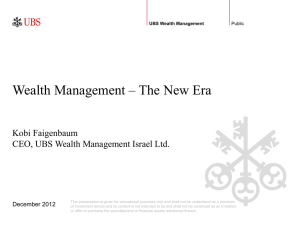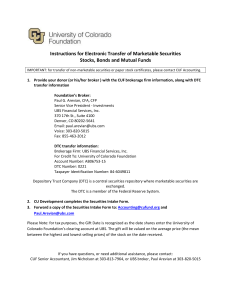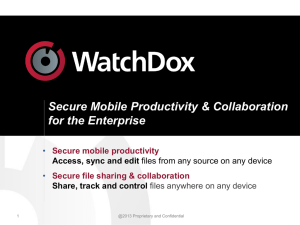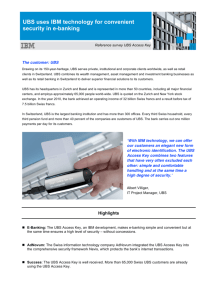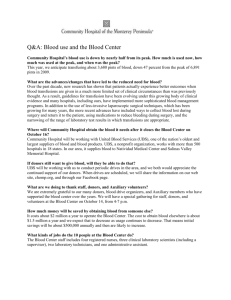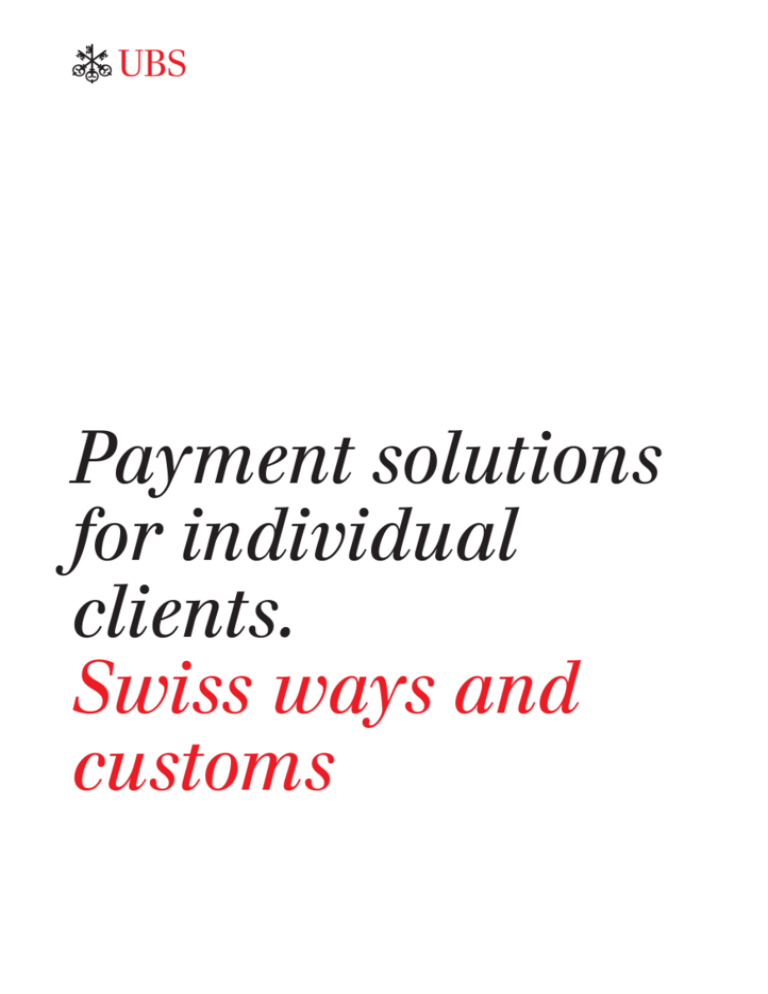
ab
Payment solutions
for individual
clients.
Swiss ways and
customs
Contents
1
Introduction to payments in Switzerland 05
How can I make day-to-day payments without using cash?
Maestro card
Credit cards
UBS customer card
06
06
17
What types of bill will I encounter?
Bill with red payment slip
Bill with orange payment slip
Bill with Swiss or foreign bank account details
Direct debit (LSV+)
18
19
10
11
How can I pay my bills and keep track of my accounts and credit cards?
UBS e-banking Security in UBS e-banking
UBS Multimat
UBS easy form
UBS global form
UBS standing order form
12
13
14
16
17
17
Financial information and stock exchange orders
UBS Quotes
Stock exchange orders with UBS e-banking
18
18
Additional services
UBS products and services for private clients
UBS KeyClub
19
19
Contact information
19
2
Introduction to payments in
Switzerland
Welcome to Switzerland. This brochure aims to familiarize you with the various Swiss
ways and customs and the means available for making and collecting payments. It
describes the methods used to pay for everyday goods and services. You will then see
some examples of the documents you need to settle your bills. We hope to make your
start in Switzerland easier with this brochure.
Some general information
Account
It all starts with a bank account. The UBS Pay and Save Basic Offering includes all the
products and services that you need for your daily banking activities in CHF – at an
attractive all-in fee. For an account in other currencies, e.g. USD, GBP, the UBS current
account would be the right choice.
Cash
If you have just arrived and have cash that you wish to exchange for Swiss francs or
other currencies, most of our branches provide a foreign exchange service for the
most commonly used currencies. In addition all our branches have at least one automated teller machine (ATM) that dispenses euros.
Bills
Bills attached to invoices are the most common way to pay in Switzerland. They are
normally paid within 30 days of being received. You will therefore have plenty of time
after your arrival to open a bank account and become familiar with the various means
of payment available to you before you have to pay your first bill.
You may choose to receive certain bills electronically and pay them with a single click
of your mouse. See “E-bill in UBS e-banking” for an explanation of this service.
Payments through UBS or Swiss Post
UBS handles your outgoing payments and offers solutions for collecting incoming payments. For your convenience, we recommend that you use the means presented in this
brochure.
Payments through Swiss Post: Switzerland has 3,000 post offices, where you can pay
your bills in cash directly at the counter.
Cheques
Cheques are not a common payment method in Switzerland, you can either use
UBS Correspondence cheques (personal cheque, cheque book) or UBS Bankcheques.
3
5
How can I make day-to-day payments
without using cash?
Maestro card
Anyone with a bank account can obtain a Maestro card, which is renewable every two
years. It comes with a PIN that can be changed at any time.
This card gives you access to the following services:
• 24-hour cash withdrawals at Bancomat ATMs equipped with the Maestro card function
• Cash withdrawals in a growing number of countries around the world
• Cash withdrawals in euros at most ATMs in Switzerland equipped with the
Maestro card function
• At UBS ATMs, your UBS Maestro Card also serves as a customer card for cash withdrawals, account information, paying in at Bancomat Plus ATMs and
payments at UBS Multimat machines
• This card can also be used to pay for your purchases in most shops and service
stations. All ATMs at service stations, which are open 24 hours a day, accept the
Maestro card
The UBS Optimus Foundation Charity Card
Using the UBS Optimus Foundation Charity credit card is a simple and direct way to make
a commitment to the children of this world with every transaction you make. UBS transfers
0.75% of your total credit card spending every year to the UBS Optimus Foundation.
By doing so, you can help to open up new prospects for thousands of children.
UBS customer card
Any account holder who has not requested any other type of card automatically
receives a customer card free of charge. This also comes with a PIN code.
It allows the cardholder to withdraw money in Swiss francs or euros 24 hours a day
at UBS ATMs only. The customer card also enables you to carry out your banking
transactions quickly and easily with the help of UBS Multimat machines.
Credit cards
You are no doubt familiar with credit cards. We would like to highlight some of the
advantages offered all over the world:
• Up to CHF 300,000 accident insurance cover when you pay for your trip by credit card
• Optional photo on back of card for greater card security
• Car rental: no deposit to pay, special terms with Europcar
• PIN code for cash withdrawals at ATMs all over the world
• Monthly bills can be paid all at once or in several installments
• Additional advantages with the Gold Card: higher credit limit, higher insurance
coverage (CHF 600,000), Priority Pass
6
7
What types of bill will I encounter?
Payment slips are used to process payment transactions. It is standard practice in
Switzerland to include a payment slip with every bill. To make a payment using a
payment slip, you can either
- enter the payment slip information in the payment order function in your e-banking (see page 12)
- send the payment slip with completed information to your bank (e.g. to UBS via
UBS easy (see page 16)
- present the payment slip at any post office, paying the amount due with cash directly
Bill with red payment slip
• In the example below the ultimate payee (1) is someone who holds an account with
a bank
• The payment slip shows the bank account (International Bank Account Number (IBAN)) of the ultimate payee (2) as well as the payee’s bank (3)
• For processing purposes, the post office account of the payee’s bank (4) is indicated
• The amount due (5) and the payer’s details may be pre-printed by the payee If not, you have to fill in the amount along with your name and full address in fields (5) and (6)
• It is advisable to include a short description of the ‘reason for payment’ in field (7),
e.g. a reference number on your bill
• The payee receives a copy of the red payment slip or the name and address of
the payer on his/her credit advice
• Note: If the payee has a direct account with the post office, his/her name will appear directly under (3)
Bill with orange payment slip
This payment slip is referred to as the ESR (German acronym for payment slip with
reference number). It works the same way as the red payment slip, but each bill
also includes a unique reference number per bill that allows the payee to match the
received payments automatically to his/her accounts receivables.
• In the example below the ultimate payee (A) holds an account with a bank (B)
• For processing purposes, the post office account of the payee’s bank (C) is indicated
• The amount due (E) and the payer’s name (D) may be pre-printed by
the payee. If not, you have to fill in the amount along with your name and full address in fields (E) and (D)
• No message to the payee is allowed in field (H)
• The reference number (F) is key for the payee to match your payment to his/her accounts receivable. When entering the details of your orange payment slip into an e-banking order, it is crucial that you include this line
• If you use a payment slip reader, you can also scan the coding line (G), as this line
includes the details on the payee
• The payee receives the details and the reference number on his/her credit advice
• Note: If the payee has an account with the post office, his/her name will appear directly under (B)
H
B
A
F
3
C
7
2
E
E
1
4
5
5
6
8
D
6
G
9
Bill with Swiss or foreign bank account details
You may receive a bill from Switzerland or another country containing the payee’s bank
account details. This information will enable you to transfer an amount in Swiss francs
or a foreign currency, which will be debited to one of your accounts and credited to the
payee’s account at his/her bank in Switzerland or abroad.
Possible means of payment:
• UBS e-banking via the Internet or UBS Multimat (screens to be filled in with the
information given on your bill)
• Payment order on paper (e.g. UBS global payment order) to be filled in and sent to your bank
The bill should include at least the following:
• Payee’s details
• Payer’s details
• Description of item sold
• Amount to be paid
• Service provider’s bank account details – account number in IBAN format where possible
• Payment deadline
The IBAN account number format was created to streamline cross-border payments in
Europe.
Direct debit (LSV+/BDD/SDD)
As an alternative to making regular payments to the same recipient, you can allow your
account to be debited directly. This way your payments are made reliably and on time,
you can monitor them via UBS e-banking (see page 12) and you have the right of objection
at any time in a specific period. To start the process, you can contact your payee and
request a bill payment by direct debit. He/she will send you the relevant forms.
Purpose
• Regular payments in Swiss francs and euros to Swiss bank accounts
• Here are some examples of what it can be used for:
- Rent
- Insurance premiums
- Telephone bills
- Electricity bills
- Credit card bills, etc.
Benefits
• You save time and money
• One-time signature for each direct debit authorization – that’s all it takes
Requirements
• Account with UBS
• Debit authorization form must be signed
In the bank account details shown on bills received from countries in the EU/EEA,
the payee’s account is shown in IBAN format. In addition to the IBAN, the BIC (Business
Identifier Code) of the payee’s bank is shown.
Including these two elements on every payment order, whether in electronic or paper
form, ensures a reliable and rapid transfer of the funds to your payee. European banks
now require the IBAN and BIC for all payments. From 2007, payment orders submitted
without this information can be refused by European banks.
10
11
How can I pay my bills and keep track
of my accounts and credit cards?
UBS e-banking
UBS e-banking makes it easier than ever before to carry out banking and stock market
transactions – no matter where you are or what time it is. Data is encrypted in accordance with a high security standard and can only be accessed using individual security
features.
Purpose
• Execution and management of payments and standing orders in Switzerland and abroad as well as account transfers
• Store and manage payment templates
• View account information
• E-bill: The most convenient way to pay your electronic bills
• Online statement of your UBS Credit Cards
Benefits
• Low-cost method of payment
• Overview of pending and executed payments
• Flexible and easy to use, no matter where you are
• Available 24 hours a day
• Convenient payment order entry with one of the many payment slip readers available on the market
Requirements
• Account with UBS
• UBS e-banking agreement
• Computer with standard operating system, recommended browser version and
Internet access
E-bill in UBS e-banking
Most financial institutions, including UBS, have linked their banking portals to the e-bill
network by SIX Paynet and can thus offer their clients EBPP (electronic bill presentment
and payment) services (= e-bill). If you have a UBS e-banking agreement, you have access
to electronic bills sent to you by service providers that are members of the e-bill network
by SIX Paynet. To receive your bills, first sign up for the e-bill service and then inform
your service provider. These two steps should be carried out directly in UBS e-banking.
You will be notified by e-mail when an electronic bill has arrived. All you have to do then
is view the delivered bill and pay it with a single click.
Security in UBS e-banking
UBS guarantees you the best possible security measures at all times for your banking
transactions. UBS uses a chip card-based solution, which does not require any software to
be installed.
The system automatically encrypts all data sent via the Internet. It uses highly secure
algorithms to protect your data.
Your personal authorization data and equipment:
• Agreement number
• PIN for your Access Card
• Access Card
• Card reader or Access Key
Payment services in UBS e-banking
• Single payments (local and international)
• Payment templates
• Standing orders
• Payment of e-bills
• Data transfers
• Online objection of LSV+ debits (see page 11)
The basic log-in equipment you will receive is the UBS card reader.
12
13
You will use the card reader equipment to securely log in to UBS e-banking as well as to
confirm the beneficiary. This is a state-of-the-art additional security feature for online
payment transactions, which ensures that your beneficiary details can not be manipulated
by third parties.
For more convenience, especially for the confirmation of beneficiaries, you can order
the UBS Access Key (see below) that replaces the UBS card reader. It contains the same
security features, but is easier to use and more convenient.
Benefits
• Low-cost way to pay your bills
• The UBS Multimat scans the payment slips so you do not have to write the information out by hand
• Overview of pending and completed payments
• Available around the clock in many UBS branches
Requirements
• Account with UBS
• A UBS customer card or UBS Maestro Card with a personal PIN code
• There is a CHF 50,000 limit per calendar month and card for payments/standing
orders
Payment services in UBS Multimat
• Single payments
• Standing orders
UBS Multimat
The UBS Multimat is an enhanced ATM, accessible 24 hours a day in most of UBS
branches in Switzerland. It enables you to carry out your banking transactions quickly,
easily and electronically using your customer card or your UBS Maestro Card. You can
obtain all the information on your accounts, check the balance or print a detailed
statement, enter Swiss or foreign payment orders, make transfers from one account to
another and manage your standing orders. You can also view information on exchange
and interest rates at the touch of a button.
Purpose
• Making and managing payments and issuing standing orders in Switzerland or abroad in Swiss francs or foreign currencies and carrying out account transfers in all account currencies
• Querying account information
• Information on exchange and interest rates can be viewed at the touch of a button
14
15
UBS easy form
The simple way to pay bills from home: use UBS easy to make day-to-day payments
quickly and conveniently while benefiting from low processing costs. Just fill out the
form, attach the completed payment slips and send it to UBS. You can keep the left part
of the payment slips for your records.
Purpose
• Execution of all payment orders within Switzerland
Benefits
• You can issue the order as early as six months before the required date of execution
• Easy to use
• UBS easy order forms provided free of charge
Requirements
• Account with UBS
• No technical requirements
UBS global form
Make payments to anywhere in the world – in Swiss francs or in a foreign currency:
UBS global allows you to make international payments conveniently and securely
without the need for technical tools.
Purpose
• Easy-to-make payments abroad
• Can be used to make payments within Switzerland for which you do not have
payment slips
• Transfers to other UBS accounts possible
Benefits
• Amounts can be transferred in Swiss francs or in a foreign currency • Offers various options for invoicing the cost of international payments
• UBS global order forms provided free of charge
Requirements
• Account with UBS
• No technical requirements
UBS standing order form
The advantage of the UBS standing order is that you only need to enter your payment
details and schedule once. Your payments will be executed automatically.
Purpose
• UBS standing order: transferring fixed amounts in any currency on fixed dates to
the same recipient within Switzerland or abroad
Benefits
• Straightforward and clear payment processing in any currency
• Can be used for payments to postal and bank accounts in Switzerland or abroad
Requirements
• Account with UBS
• No technical requirements
16
17
Financial information and
stock exchange orders
Additional services
UBS Quotes
UBS Quotes provides you with comprehensive information and the latest news from the
world’s most important financial markets. UBS clients benefit from an exclusive and
expanded version of Quotes that includes comprehensive financial market data and a wide
range of useful functions. In addition to the extensive financial and research information,
you can also group together financial instruments relevant to you in virtual portfolios,
keep track of prices, and keep yourself informed about upcoming maturities and
reached limits via SMS or e-mail-notification.
UBS products and services for private clients
UBS offers a wide selection of products and services for your individual needs. Depending
on your personal situation, you have the choice of a wide selection of solutions.
Find more on: www.ubs.com/lifecycle
Stock exchange orders with UBS e-banking
Stock exchange orders can be issued with no time delay on the electronic exchanges of
SWX (Zurich), NASDAQ, AMEX and NYSE (New York), LSE and SWX Europe (London),
MSE (Milan), XETRA (Frankfurt) and EURONEXT (Paris, Amsterdam, Brussels).
UBS KeyClub
Join UBS KeyClub free of charge and you will automatically receive valuable points by
using your UBS Credit Card. These points can be spent on UBS KeyClub’s constantly
expanding range of special offers. All you have to do to take advantage of the many
benefits offered by UBS KeyClub is complete an application form. You can download
the application form and complete it directly on screen. KeyClub membership is free
of charge and does not entail any obligation. As a KeyClub member, the more banking
transactions you carry out with UBS, the more points you collect. For more information
and to find out how to spend your points, see: www.ubs.com/keyclub.
Our automatic interfaces facilitate the electronic forwarding of your stock exchange
orders to the global stock exchanges. This allows you to benefit extensively from our
global market presence, which secures access to over 50 stock exchanges and enables
us to execute orders on the world’s leading financial markets as rapidly as possible.
Where local market and stock exchange provisions do not permit electronic connections,
orders are handed over to our trading specialists, who process your transactions quickly
and efficiently.
The UBS e-banking stock exchange function is rounded off by the option to change the
trading country and view the issue calendar.
Contact information
If you have any questions relating to the services detailed in this brochure or any other
customized solutions, you can get in touch with us via the following channels:
By telephone: UBS Service Line for private clients on 0848 848 054
Personal consultations: Monday to Friday, 8 a.m. to 6 p.m.
By e-form: www.ubs.com/contact
By visiting your nearest branch: www.ubs.com/locationfinder
18
19
This brochure is intended for information purposes only. The services mentioned herein are subject to legal restrictions in some countries and can therefore not be offered on an unrestricted
basis throughout the world. UBS reserves the right to change the content at any time without prior notice. This brochure may not be reproduced or distributed without the permission of UBS.
© UBS 2011. The key symbol and UBS are among the registered and unregistered trademarks of UBS. All rights reserved. 83516E
ab

